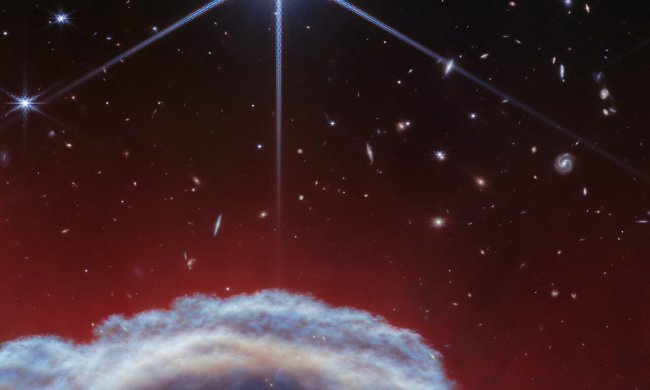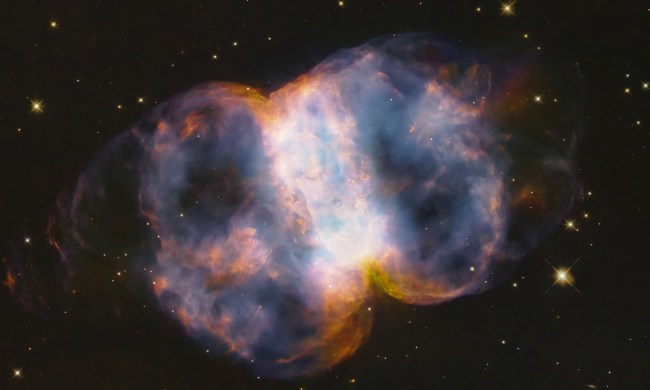When you look to the stars, you might expect to see a planet, a star, or even the International Space Station, but this week’s Hubble image shows something rather unexpected: A Prawn. The image shows the beautiful Prawn Nebula, located around 6,000 light-years away in the tail portion of the constellation Scorpius.
Despite the nebula’s large size, spanning over 250 light-years, it is rarely imaged as it is very dim, emitting only a small amount of light. The stars which can be seen appear to be a blue-white color, but in addition to this most of the stars within the nebula emit light in other portions of the spectrum that are invisible to the human eye. Hubble images in both the visible light wavelength and the infrared, allowing it to see more details of the beautiful swirls of dust and gas.

“The Prawn Nebula, also known as IC 4628, is an emission nebula, which means its gas has been energized, or ionized, by the radiation of nearby stars,” Hubble scientists explain. “The radiation from these massive stars strips electrons from the nebula’s hydrogen atoms. As the energized electrons revert from their higher-energy state to a lower-energy state by recombining with hydrogen nuclei, they emit energy in the form of light, causing the nebula’s gas to glow. In this image, red indicates the presence of ionized iron (Fe II) emission.”
The nebula is a busy star-forming region, creating both individual stars and clusters of stars. In between these points of light are voids or cavities, which are created when hot stars give off stellar winds which blow away matter like dust and gas.
To show the nebula in its full context, the Hubble scientists also released this image of the full nebula, showing where this particular zoom-in image fits into the whole:




